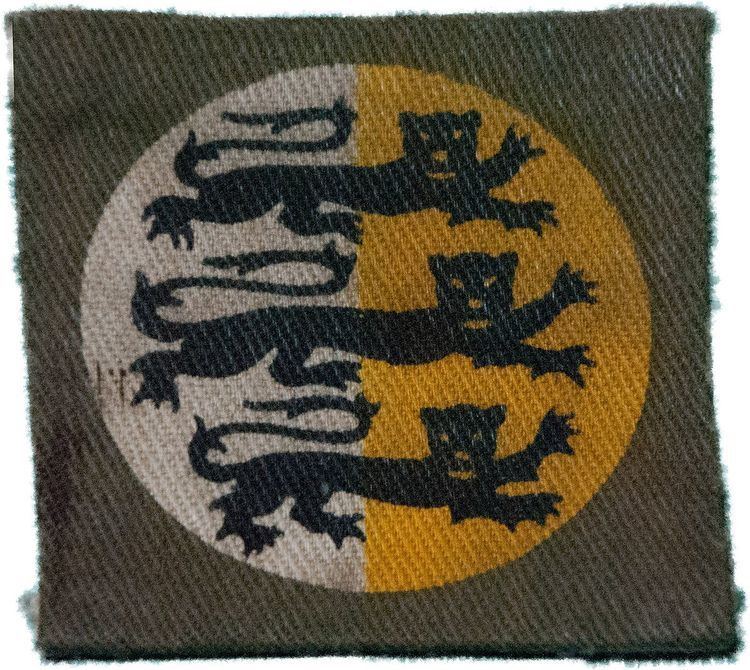Country United Kingdom Type Infantry Brigade | ||
 | ||
Active May 1915–191911 January – 1 December 1941 Role Training and Home Defence Part of First World War:Southern Army71st Division (attached)67th (2nd Home Counties) Division (attached)Second World War:Dorset County Division | ||
The 226th Infantry Brigade was a Home Service formation of the British Army that existed under various short-lived titles in both the First and Second World Wars.
Contents
First World War
On the outbreak of the First World War, the Territorial Force (TF) immediately mobilised for home defence, but shortly afterwards (31 August 1914), its units were authorised to raise 2nd battalions formed from those men who had not volunteered for, or were not fit for, overseas service, together with new volunteers, while the 1st Line went overseas to supplement the Regulars. Early in 1915 the 2nd Line TF battalions were raised to full strength to form new divisions, and began to form Reserve (3rd Line) units to supply drafts. The remaining Home Service men were separated out in May 1915 to form brigades of Coast Defence Battalions (termed Provisional Battalions from June 1915).
7th Provisional Brigade
7th Provisional Brigade was one of these formations, with the following composition:
Also attached:
These units had fluctuating strengths. For example, in November 1915 the 82nd Provisional Bn consisted of 1550 men, but drafts to the 2nd and 3rd Line TF units and 63rd Provisional Battalion (in 5th Provisional Brigade) reduced this to 1100, including just under 200 men of the National Guard. The Battalion War Diary complains that many of the TF men being received from the Gloucesters and Worcesters 'especially those sent from Bristol have ailments which will prevent them ever becoming efficient soldiers'. The National Guard (or National Reserve) men would have been in Medical Category C.
The Provisional Brigades were dispersed in defence positions along the East Anglian coast. In July 1916, 7th Provisional Bde was at Frinton-on-Sea and Walton-on-the-Naze, forming part of Southern Army of Home Forces.
226th Mixed Brigade
The Military Service Act 1916 swept away the Home/Foreign service distinction, and all TF soldiers became liable for overseas service, if medically fit. The Provisional Brigades thus became anomalous, and at the end of 1916 their units became numbered battalions of their parent units. Part of their role was physical conditioning to render men fit for drafting overseas. 7th Provisional Brigade became 226th Mixed Brigade in December 1916, with its units redesignated as follows:
Brigadier-General Hon. C.G. Fortescue (21 November 1917 – 11 March 1918)
Brigadier-General B.C.M. Carter (from 25 March 1918)
Service
At first, 226th Brigade had no divisional allocation. Then from 13 April 1917 it was attached to 71st Division, a Home Service formation also composed of former Provisional Battalions.
On 10 January 1918, instructions were issued to break up 71st Division by mid-March. 226th Brigade exchanged some units with other brigades of the division and was then attached to 67th (2nd Home Counties) Division (again, without formally being part of the division).
In May 1918 each of the non-divisional home service brigades provided one Garrison Guard battalion to reconstitute the 59th (2nd North Midland) Division in France. 226th Brigade supplied the 2/6th Durham LI to the 177th (2/1st Lincoln and Leicester) Brigade, which was replaced in the brigade by a newly raised Home Service battalion of the regiment.
The brigade never served overseas, and was demobilised early in 1919.
Second World War
On 11 January 1941, the 226th Independent Infantry Brigade (Home) was organised. It was commanded by Brigadier J.C.A. Birch (Brig H.S. Brown from 27 June 1941) and consisted of newly raised infantry battalions.
Service
Upon formation, the brigade came under Southern Area headquarters until 28 February 1941 when it briefly came under command of 3rd Infantry Division. On 24 April 1941, the 226th Brigade became part of the newly created Dorset County Division, which had taken over the operational commitments of Southern Area.
Dorset County Division was broken up on 24 November 1941, and the brigade was attached to Southern Command until 1 December, when its headquarters was re-designated HQ 34th Army Tank Brigade. with the converted 8th Battalion, Essex Regiment and other units.
Order of Battle
The composition of 226th Brigade was as follows:
